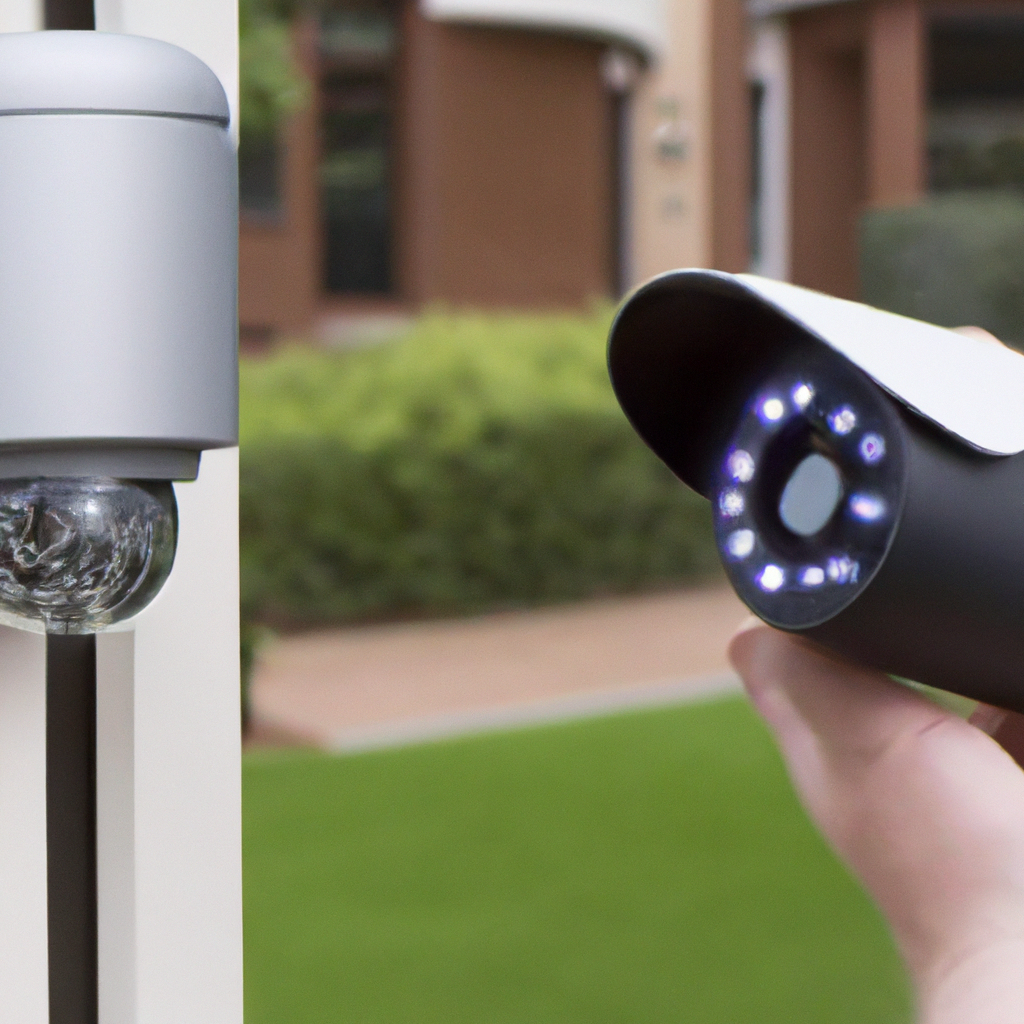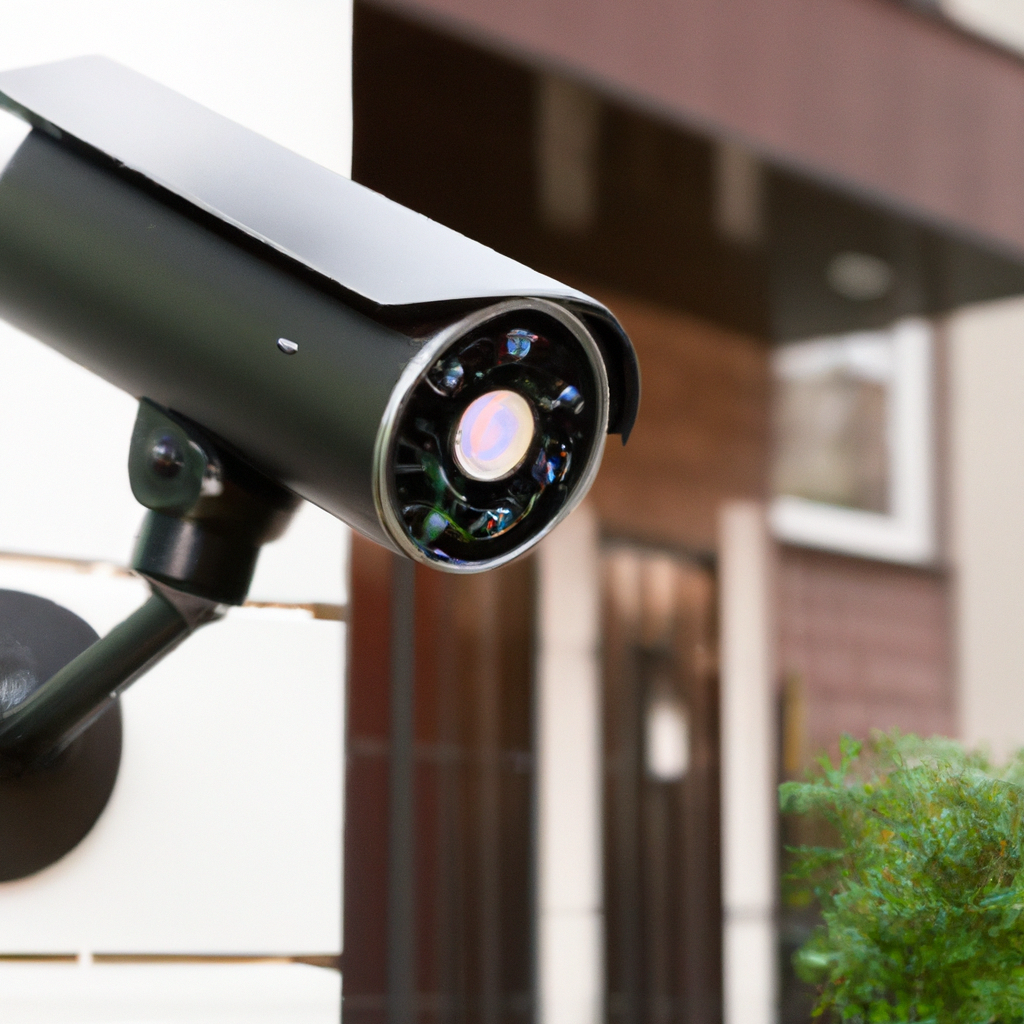Imagine a world where you can keep an eye on your home, even when you’re miles away. Smart home security cameras have revolutionized the way we protect our homes, providing an extra layer of safety and peace of mind. But have you ever wondered how these cameras actually work? In this article, we’ll explore the fascinating mechanisms behind smart home security cameras and how they work tirelessly to safeguard your home from potential threats.
Understanding Smart Home Security Cameras
Smart home security cameras are advanced surveillance devices designed to help protect your home and provide peace of mind. These cameras offer a range of features and capabilities that go beyond what traditional security cameras can offer.
What are smart home security cameras?
Smart home security cameras are connected devices that can be accessed and controlled remotely, allowing you to monitor your home from anywhere using your smartphone or computer. These cameras are equipped with various features such as high-definition video recording, motion detection, night vision, and two-way audio communication.
How do they differ from traditional security cameras?
While traditional security cameras are typically hardwired and require manual monitoring, smart home security cameras offer wireless connectivity and can be integrated into a larger smart home ecosystem. These cameras are designed to be user-friendly and provide more flexibility, convenience, and advanced features compared to traditional cameras.
Types of smart home security cameras
There are several types of smart home security cameras available on the market. These include indoor cameras, outdoor cameras, doorbell cameras, and even cameras specifically designed for pet monitoring. Each type offers specific features and benefits to cater to different needs and preferences.
Components and Features of Smart Home Security Cameras
Smart home security cameras are equipped with various components and features that make them effective in monitoring and protecting your home.
Camera sensors and resolution
Smart home security cameras use advanced camera sensors and offer high-resolution video recording capabilities. The resolution can vary among cameras, typically ranging from 720p to 4K. Higher resolution cameras provide clearer and more detailed footage.
Field of view and zoom capabilities
The field of view refers to how much area a camera can cover. Smart home security cameras often have wide-angle lenses, which allow for a broader view of the surroundings. Some cameras also offer pan, tilt, and zoom capabilities, enabling you to adjust the camera’s angle and zoom in on specific areas.
Night vision and low-light performance
To ensure round-the-clock surveillance, smart home security cameras are equipped with night vision capabilities. These cameras use infrared LEDs to capture clear video footage in low-light conditions or complete darkness. This feature is essential for monitoring your property during nighttime.
Two-way audio communication
Many smart home security cameras feature built-in microphones and speakers, enabling two-way audio communication. This allows you to speak and listen to whoever is near the camera, making it useful for monitoring children, pets, or communicating with delivery personnel.
Motion detection and alerts
Smart home security cameras use motion detection technology to actively monitor for any movements within their field of view. When motion is detected, the camera will send alerts to your smartphone or computer, notifying you of potential activity or intrusion.
Face and object recognition
Advanced smart home security cameras utilize facial and object recognition technology. This feature helps distinguish between familiar faces and unknown individuals, providing additional security and convenience.
Integration with other smart home devices
Smart home security cameras can be integrated with other smart home devices, such as smart lights, door locks, and alarm systems. This integration allows for automated actions triggered by camera events, enhancing the overall security infrastructure of your home.

Wireless Connectivity and Communication
Wi-Fi and Bluetooth technology
Smart home security cameras connect to your home network using Wi-Fi technology, allowing you to access the camera remotely through your smartphone or computer. Some cameras also have built-in Bluetooth capabilities, enabling direct connections with other Bluetooth-enabled devices.
Cloud storage and remote access
To ensure easy access to recorded footage, smart home security cameras often offer cloud storage options. The camera uploads video footage to a secure cloud server, allowing you to access and review recordings from anywhere with an internet connection. This eliminates the need for local storage devices and provides convenient backup storage.
Mobile applications and control
Most smart home security cameras come with dedicated mobile applications that allow you to control and monitor the camera remotely. Through these applications, you can view live video feeds, adjust camera settings, receive motion detection alerts, and access recorded footage.
Data encryption and privacy
Smart home security cameras prioritize data encryption to protect your privacy. The camera’s communication with your smartphone or computer is encrypted to ensure that only authorized users can access the camera’s feed and recordings. Additionally, many cameras offer privacy settings that allow you to control when the camera is active and viewable.
Installation and Placement
Indoor vs. outdoor cameras
Smart home security cameras are designed for both indoor and outdoor use. Indoor cameras are typically smaller and more discreet, allowing you to monitor specific areas within your home. Outdoor cameras are built to withstand various weather conditions and offer features like weather resistance and tamper detection.
Mounting options and considerations
When installing smart home security cameras, you have various mounting options to choose from. Cameras can be mounted on walls, ceilings, shelves, or placed on flat surfaces. It is important to consider the camera’s field of view and placement height to ensure optimal coverage and minimize blind spots.
Power source (battery or wired)
Smart home security cameras can be powered either by batteries or wired connections. Battery-powered cameras offer flexibility in terms of placement and are easy to install. However, they require regular battery replacements or recharging. Wired cameras, on the other hand, require a continuous power source but provide uninterrupted surveillance coverage.

Recording and Storage Options
Local storage vs. cloud storage
Smart home security cameras offer different recording and storage options. Local storage involves saving video footage directly to a microSD card or a separate storage device connected to the camera. Cloud storage, as mentioned earlier, uploads the recordings to an off-site server, providing convenient access to recordings anywhere.
Continuous recording vs. event-based recording
Some cameras offer continuous recording, where the camera records 24/7 without interruption. This can be useful when you want to review long periods of footage. Alternatively, event-based recording focuses on capturing video when motion is detected or specific events occur, conserving storage space and allowing for easier review.
Storage capacity and limitations
The storage capacity of smart home security cameras can vary depending on the camera model and the chosen recording option. Cameras with local storage may have limitations based on the size of the microSD card. Cloud storage options typically provide various subscription plans with different storage capacities, allowing you to choose the one that suits your needs.
Remote Monitoring and Control
Live streaming and real-time monitoring
Smart home security cameras enable live streaming, allowing you to view real-time video footage of your home remotely. This feature is particularly useful for monitoring your home while you are away or for checking in on loved ones and pets.
Remote control and camera adjustment
With remote monitoring, you can also control and adjust camera settings remotely. This includes panning, tilting, and zooming the camera, changing recording options, and adjusting motion detection sensitivity. Remote control ensures that you have complete control over your camera’s functionality, even when you are not physically present.
Alert notifications and remote access
Smart home security cameras provide alert notifications to your smartphone or computer whenever motion is detected or specific events occur. These notifications allow you to quickly respond and take appropriate action if any potential risks or intrusions are detected. Additionally, remote access allows you to access recorded footage regardless of your physical location.

Smart Home Integration and Automation
Integration with voice assistants
Many smart home security cameras can be integrated with popular voice assistants like Amazon Alexa or Google Assistant. This integration allows you to control your camera using voice commands, making it even more convenient and hands-free.
Automation with smart home devices
Smart home security cameras can be automated to work seamlessly with other smart home devices. For example, when motion is detected by the camera, it can trigger your smart lights to turn on or your alarm system to activate. This integration enhances the security and automation capabilities of your smart home ecosystem.
Customizable settings and scheduling
Smart home security cameras offer customizable settings and scheduling options. You can adjust motion detection sensitivity, customize activity zones, and set specific recording schedules based on your preferences. This level of customization ensures that the camera operates according to your specific needs and helps optimize its performance.
Deterrent and Protective Features
Visible presence and deterrence
The presence of smart home security cameras can act as a deterrent for potential intruders. The visibility of the cameras can discourage criminals from attempting to break into your home, increasing the overall security of your property.
Siren and alarm capabilities
Several smart home security cameras are equipped with built-in sirens or alarms. These features can be triggered manually or automatically when certain events occur, such as detecting motion or tampering with the camera. The loud sound alerts you and can scare away potential intruders.
Built-in lighting and floodlights
Some outdoor smart home security cameras come with built-in lighting or floodlights. These lights can be activated automatically by motion detection or manually through the camera’s control interface. The additional lighting enhances visibility, acts as a deterrent, and helps capture clearer video footage during nighttime.

Video Analytics and Advanced Capabilities
Video analytics and smart detection
Advanced smart home security cameras utilize video analytics and smart detection capabilities. These cameras can analyze video footage in real-time and detect specific types of activity, such as a person or a vehicle. Smart detection allows for more accurate and targeted alerts, reducing false alarms.
Advanced features like facial recognition
Certain smart home security cameras offer advanced features like facial recognition. With this capability, the camera can identify familiar faces and notify you specifically when someone unknown is detected. Facial recognition enhances security and allows for personalized monitoring.
Activity zones and customizable alerts
Activity zones allow you to customize specific areas within the camera’s field of view for monitoring. You can designate certain zones as high priority, and the camera will send alerts when activity is detected in those zones. Customizable alerts ensure that you receive notifications for events that are most important to you.
Privacy and Security Considerations
Data encryption and secure connections
Smart home security cameras prioritize data encryption to ensure that your video feeds and recorded footage remain private and secure. Look for cameras that support secure connections using protocols such as HTTPS or SSL/TLS to safeguard your data during transmission.
Secure login and authentication
To protect against unauthorized access, smart home security cameras often require secure login credentials and authentication. It is recommended to use strong, unique passwords and enable additional security measures like two-factor authentication for added protection.
Privacy settings and user control
Smart home security cameras provide privacy settings that allow you to control when the camera is recording or viewable. This includes scheduling the camera to be inactive during certain periods or turning off audio recording. User control ensures that you have the final say in how your camera operates and respects your privacy.
In conclusion, smart home security cameras offer a range of features and capabilities that go beyond traditional security cameras. From high-resolution video recording to advanced detection and integration with other smart home devices, these cameras provide enhanced surveillance and convenience. With the ability to monitor and control your home remotely, smart home security cameras contribute to the overall protection and peace of mind for you and your loved ones.











